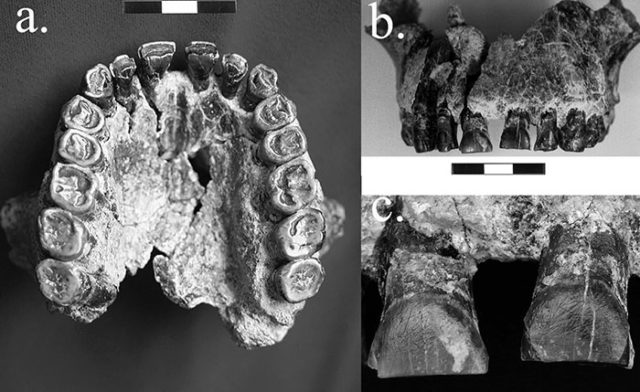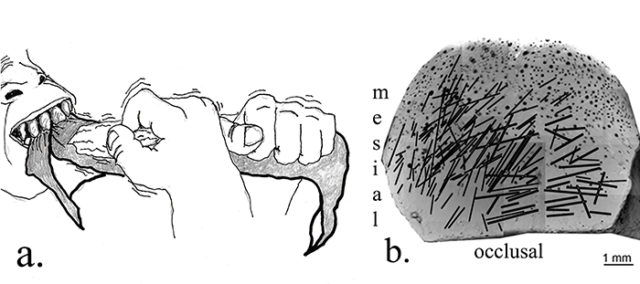21st-century humans are predominantly right-handed – approximately 90% of us use our right hands for important activities like writing and eating.
What about our ancestors? What can research into early humans tell us about how modern humans developed right-hand dominance? A study recently published in the Journal of Human Evolution aims to find this out.

The study, performed by an international team of researchers from numerous universities around the globe, examined ridges or markings on an early human – Homo habilis – fossil known as OH-65, which dates back 1.8 million years. The fossil was discovered in 2003 in a channel of the Olduvai Gorge in Tanzania, one of the most important paleoanthropological sites on Earth.
By examining the OH-65 fossil, the research team made an important discovery about prehistoric hand dominance.
The team analyzed ridges seen only on the lip side of the upper right teeth and observed that most of these marks were from the left down to the right. The ridges were probably made when a stone tool used for cutting food held in the mouth left a permanent mark on the fossilized tooth’s surface. The location and direction of the ridges or marks show that Homo habilis was right handed.
Although the study used only one sample, the research team hopes more work can be done to investigate early human hand dominance. According to David Frayer of Kansas University, the team lead, “Handedness and language are controlled by different genetic systems, but there is a weak relationship between the two because both functions originate on the left side of the brain…we predict that right-handedness, cortical reorganization, and language capacity will be shown to be important components in the origin of our genus.”
Prior research has shown that brain reorganization, tool use, and dominant hand use occurred in the early evolution of humans. Homo habilis had brain lateralization and was more similar to modern humans than to apes.
The current study is the first to examine a specimen of Homo habilis teeth and provide clues to link brain lateralization, right-handedness, and language development. Apes likely have a 50% left-hand to 50% right-hand dominance, Mail Online reported.

Researchers are hopeful that studies of more Homo habilis fossils will further prove their theory that early man was right-hand dominant.
Further insights into hand dominance could link modern humans to our prehistoric ancestors and help us to understand why we possess the characteristics we do today.
